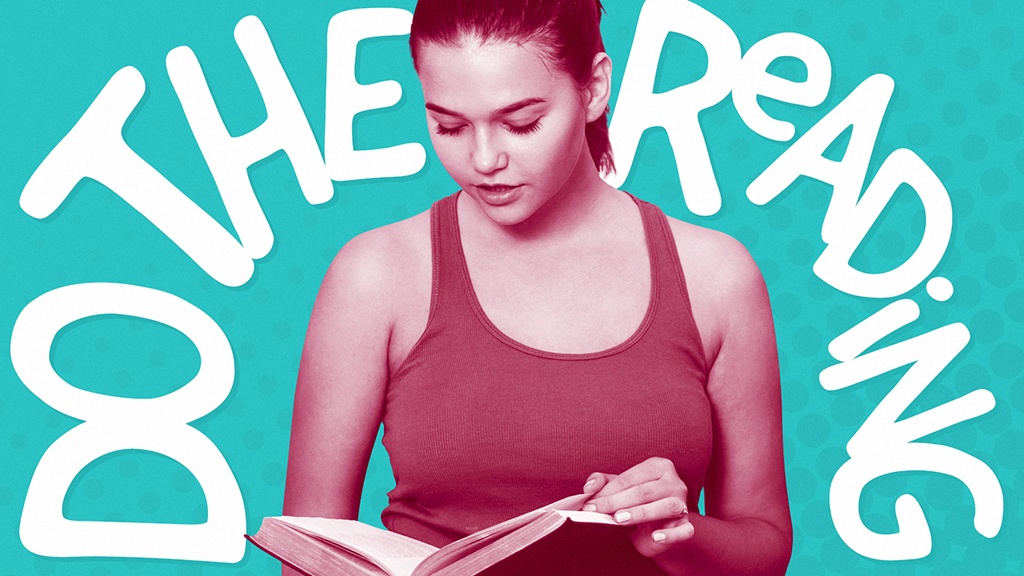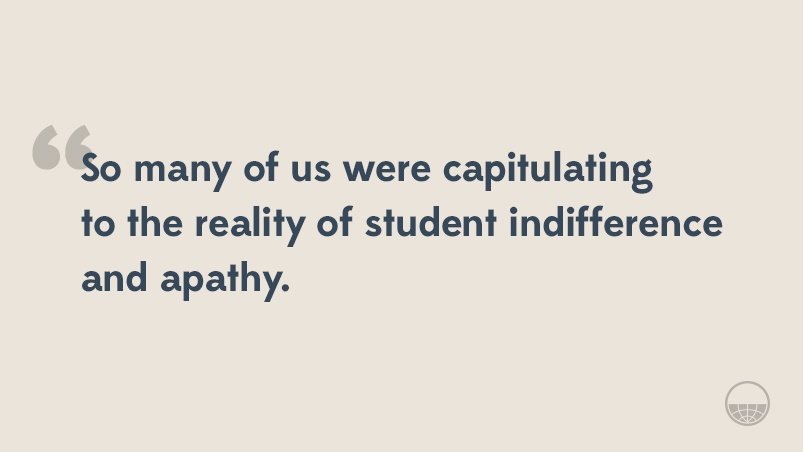
Students not doing the reading assigned for homework seems to be an eternal challenge for every teacher. Failure to do the reading stunts classroom discussions, prevents students from learning and understanding the material to an adequate depth, and does nothing to help students build literacy skills.
Lame excuses and hard lessons: why they’re not doing the reading
Have you tried asking students why they don’t do the reading? Perhaps their honesty will confirm your suspicions: students are lazy and reading is hard work, and students procrastinate and do all the reading right before an exam. But sometimes we need reminders of the barriers students face. Some have overwhelming work and family responsibilities.
Give students differentiated digital social studies activities: try Active Classroom for free
I did not face those odds personally, so I did the reading as assigned, but if my teachers had asked in order to tap into my everyday experience and family background, I would have had a useful story to tell. Growing up in Mexico, my mother did not do the reading and other homework because, as the second oldest of nine children, she was responsible for helping raise the younger ones and doing housework. She managed to complete high school, married my father, and then immigrated to the United States to become a stay-at-home mom. When my mother left Mexico, my grandparents suffered. Her three younger sisters decided that reading and studying were better options; two became dentists and one a doctor, and they stayed in Mexico.
As for my father, he made a mistake, and reading became a way to correct it. He quit school after the third grade in a Mexico that had less-than-universal compulsory education laws. After he immigrated to the U.S. as an unskilled laborer, did farm work in central California, and moved to L.A. to work as a busboy and waiter at a restaurant on Crenshaw Boulevard, he realized his error in quitting school. He started reading La Opinion, the Spanish-language newspaper, to maintain a cultural and linguistic tie to the homeland, and taught me by example about the importance of having a reading habit. Both my parents encouraged my love of reading and pushed me to do the reading for school, leading me to a college education. Did your parents do the reading when they were in school, and where did that lead them and their family?

Different students have different reasons for not doing the reading. One of my high school students worked many hours at Magic Mountain, far from her home and school in South Central L.A. Another student was a charismatic joker who drove me nuts by doing nothing asked of him until we had a one-on-one conversation and he revealed he simply could not read well and acted out to keep this embarrassing truth a secret. Yet another child revealed that he did not read because none of his classes actually asked students to read in class, even his English class. Apparently I was not the only teacher who had made the mistake of giving up on assigning reading and other homework because so many students never did them. So many of us were capitulating to the reality of student indifference and apathy. It took a veteran teacher to tell me to pick up the torch of my idealism again, center my teaching around the few who did do the reading, and through experience, learn how to make more and more students do the reading.
Fact-recall exercises just offend the students
There are some traditional response mechanisms I have reservations about, though I acknowledge they are popular. One method is to have each student prepare a summary or outline of the week’s readings. I would be profoundly bored after reading several of these, but I suppose if students are properly trained and are responsible, the assignments serve to ensure the reading is done. Another method is to administer traditional quizzes and tests to hold students accountable for doing the reading. I suppose if these can go beyond simple fact recall and regurgitation, they can achieve their purpose, though for authentic engagement and understanding it is better to ask students to respond to the reading with an extended piece of writing.
I guess my biggest reservation about these typical and common tools to compel students to do the assigned reading is the reactions students have to them. I worry that these tools are all just some version of an approach that is perceived by students as follows: I know you don’t want to read, but we have to get through this chapter, so just read and answer the questions. When I first noticed this response, I was surprised by the negativity—stubborn refusal, stunning unwillingness, and a complete lack of interest and motivation to crack open a book and read. I was an avid reader who loved literature, and here in front of me were young people who appeared to hate reading and books. I knew that some of my colleagues took this as a sure sign that neither these young people nor their parents cared about their education, but I refused to believe that. I decided that getting a student with underdeveloped literacy skills, possibly functionally illiterate, lacking a consistent reading habit and models to follow at home to become interested in doing an assigned reading had to be an academic challenge of the very highest order. Only a true teacher would dare to engage in a noble battle to gain the interest and motivation of young students, to win their attention, and ultimately, their intellect.
Engage student interest—before they read
Before you launch into a reading and any related assignment, create some interest and give students a reason to read.
- “Pinch and poke” the chapter with your students like the reading is a car you have to investigate before you purchase it: look at all the pictures, charts, and graphs to try to get a sense of the general gist and some elements on which you want to focus.
- Pose one or more powerful, open-ended questions that students will be compelled to want to answer, then say the answer is somewhere in the text.
Engage student interest during the reading
Try the following in class or as homework:
- Section by section, have students find five key words and define them.
- Have students find five statements of fact and five of opinion in the reading, after some training on how to distinguish one from the other.
- As if they are writing a test on the chapter, have students prepare one multiple-choice test item, one matching item, and one fill-in-the-blank item for each section of the chapter.
- Have students find a picture, graph, or other illustration in the chapter and explain the picture in writing, or by rephrasing or rewriting the caption.
- Have students identify five big ideas in the chapter. You can identify one such idea on one page, then have students do the same for other sections.
- Pose this question to students as an assignment: If you had to write the chapter over but only in five sentences, what would you write?
If you do a number of the above for the same chapter over several days, most students will come to a thorough understanding of the chapter, having read it several times in order to fulfill these directives.
After the reading: Have students read for a purpose—and in manageable chunks
Teachers typically ask students to read and answer questions after having finished the reading. Some teachers try to do something different by asking students to outline, take notes, or summarize chapters. Most such assignments are doomed to fall short of expectations, mostly because they involve reading long stretches of text without purpose, and thus do not lead to comprehension or retention. Assigning students short readings begins to give them practice in organizing their learning in manageable amounts.

Meaningful activities to do the reading
Give your students a variety of interesting and challenging activities to go along with the assignment such as one of the following.
- Have students create a storyboard or cartoon strip from the reading assignment.
- Have students find an issue, event, or person from the reading and write a letter agreeing or disagreeing with the topic involved.
- Ask students to tackle a reading assignment paragraph by paragraph, then identify three words from each paragraph they think are key to the author’s ideas. This enables them to concentrate on the main points from each selection. When they come back together as a class, have the students make those three words into sentences.
- Have your class analyze a picture in the textbook. Ask them to “step into the picture” and write out or brainstorm (in groups or as a class) the questions that they would ask the people in the picture or about the subject of the picture.
- Formulate a writing assignment that requires students to reflect on or resolve a controversial issue raised by the reading.
- Have students use supplementary materials such as primary sources, case studies, posters, or pictures to strengthen, illustrate, and deepen their reading and writing.
- If possible, personalize the reading for students. Try to find something in students’ lives that relates to what you want them to read in the chapter. For example, in my article, Give Students a Fresh Perspective on Government: How Catholicism Shaped Latin American Regimes, I talk about sparking interest in government by talking about students’ religious backgrounds.
- For a quick and brief assessment, have a student formulate 1-3 questions about the assigned reading. Make the assignment more accessible by instructing students to come up with questions they would ask the author if the person was in the room with them.
No More Fact-Recall
In the end, to keep yourself interested in the material you have go beyond just ensuring that students have done enough of the reading to answer some fact-recall questions about it. You need to acknowledge the reality that many students just mechanically look for the key terms of the questions in the text, and copy the phrases surrounding the terms to compose their “answer.” What you really want to know is what they understood about the reading, what they have thought about it, and what they have learned from it. But you also cannot expect to receive, and be able to grade by yourself, multiple paragraphs and essays on the reading from every student, so hopefully the short activities above will help.
Good luck. Reading is fundamental!
Give students differentiated digital social studies: try Active Classroom for free
David L. Moguel is a professor of teacher education at the Michael D. Eisner College of Education, CSU Northridge. He holds degrees from Stanford University, the John F. Kennedy School of Government at Harvard University, and UCLA. David served as a John Gardner Public Service Fellow with Ramon C. Cortines, school superintendent, and as a presidential management intern for the U.S. Department of Education. He is the co-author, with Ron Sima, of Teach Me, I Dare You: Taking Up the Challenge of Teaching Social Studies, published in 2011 by Social Studies School Service.

